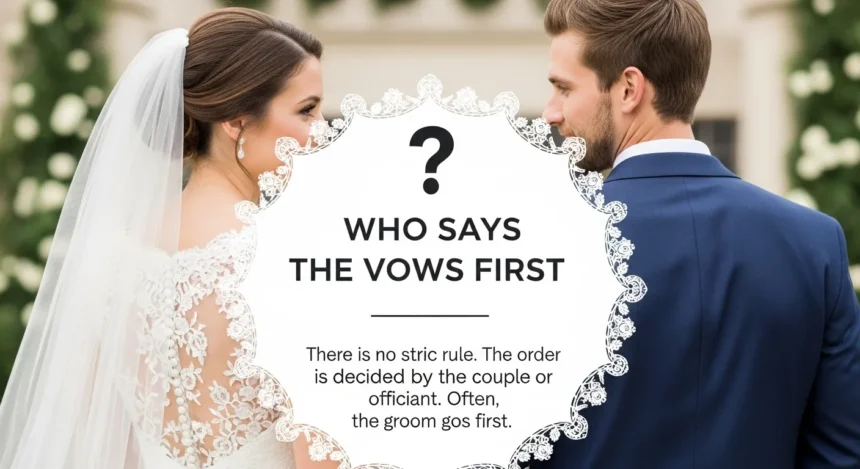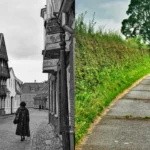Table of Contents
When we think of wedding vows, many of us picture that quiet, emotional moment at the altar when two people promise forever. But one question keeps coming up: who normally says the vows first the bride or the groom? This seemingly small detail is rooted in deep tradition, cultural differences, and modern flexibility. Let’s walk through the history, the traditions, and today’s evolving practices.
Traditional Origins of Wedding Vows
I often notice that couples who are planning a wedding want to understand why things are done a certain way. Historically, the order of vows wasn’t random it was shaped by society. In many Western traditions, especially within the Christian church, the groom would say his vows first. This practice was tied to old patriarchal beliefs where men were seen as “heads of the household.”
They believed the man’s role was to lead, and therefore his promise had to come before the bride’s. Over time, this structure became the “normal” order that officiants and families expected.
Patriarchal Influence
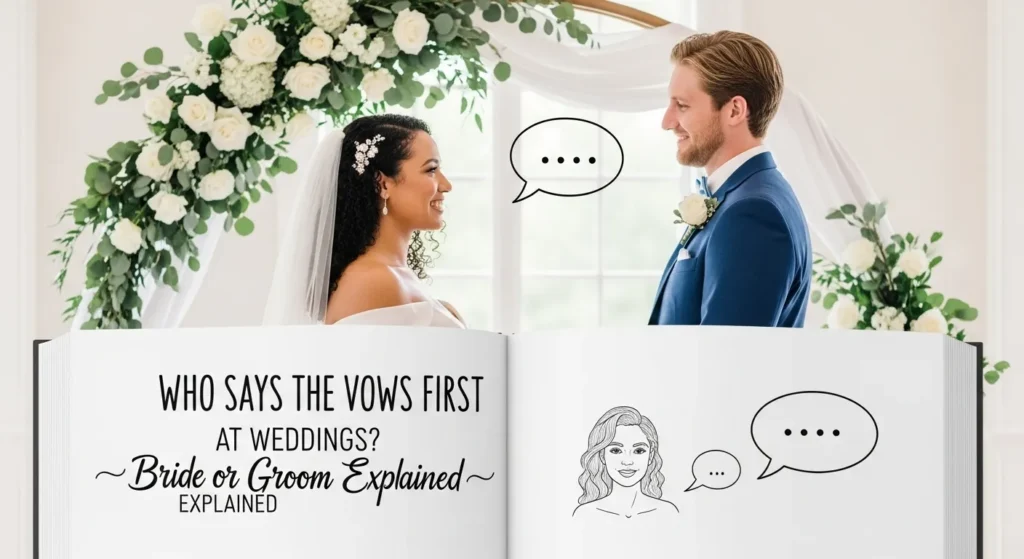
We sometimes forget that wedding ceremonies are more than romantic they are reflections of cultural power. In patriarchal societies, men were expected to take responsibility first. That’s why in the Book of Common Prayer (1549, 1594 editions), the groom’s vows came before the bride’s.
These old vows, like “for better, for worse, for richer, for poorer,” shaped what many people still hear today. But times have changed, and many couples now question if this order is still necessary.
Modern Wedding Practices
Today, weddings look very different. We see brides, grooms, and even nonbinary partners making their own choices. Many officiants encourage couples to decide the order themselves.
Some couples stick to tradition and let the groom go first. Others let the bride begin, especially if she feels more comfortable starting. A few even choose to speak their vows at the exact same time for a powerful, unified moment.
Same-Sex & Interfaith Ceremonies
We also need to recognize that same-sex couples have expanded what vows can mean. In these weddings, there is no “default” groom or bride order. Instead, couples create a sequence that feels equal and true to them.
Interfaith weddings also bring creativity. For example, in a Jewish ceremony, vows are tied to the ring exchange, while in a Muslim Nikah, the vows are structured around the Mahr (a gift from groom to bride). Couples often blend traditions, which means the order of vows becomes a personal decision rather than a rigid rule.
Cultural Perspectives on Vows
When we look at cultures around the world, the way vows are exchanged changes dramatically:
- Catholic Weddings: The formula is fixed, and customization is limited. The groom traditionally speaks first.
- Jewish Weddings: The vow moment happens during ring exchange, not before. Brides often respond second.
- Muslim Weddings: Vows can be brief and symbolic, with the groom promising honesty and care.
- Buddhist Weddings: Couples may even read vows silently during meditation.
- Hindu Weddings: The seven vows (saptapadi) are spoken as the couple walks seven steps around a sacred fire.
- Celtic Weddings: Handfasting rituals emphasize unity, not order, so vows may be simultaneous.
These differences show us there’s no single “correct” way it’s about heritage and meaning.
Legal Requirements vs Personal Vows
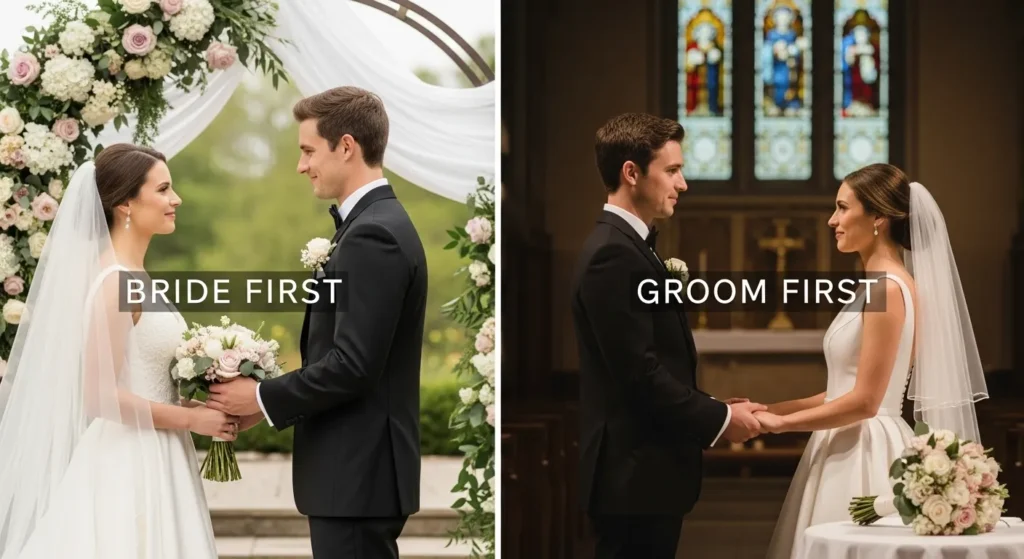
I often remind couples that personal vows, while beautiful, are not a legal necessity. The only legally required part is the declaration of intent:
“I call upon the persons here present to witness that I [your name] take you [their name] to be my lawfully wedded spouse.”
Everything else romantic promises, jokes, or poems is optional. In some religious settings, couples cannot personalize vows at all. But in civil or non-denominational weddings, the sky is the limit.
How Long Should Vows Last?
We all know how it feels when vows go on too long. Guests fidget, emotions become overwhelming, and the moment can lose its impact. Here’s what we’ve seen:
- Traditional vows: 30 seconds to 3 minutes.
- Personal vows: Best kept under 2–3 minutes.
- Exceptions: One groom famously spoke for 5 minutes, which had mixed reviews from guests!
The sweet spot is just long enough to be heartfelt but short enough to keep everyone engaged.
Fun Ways to Decide the Order
Sometimes couples can’t decide who should go first. Instead of stressing, they turn it into a game. Here are some creative ways:
- Flip a coin.
- Rock, paper, scissors.
- Roll dice (one groom rolled a 1, and still had to go first!).
- Let the officiant decide at the altar.
- Ask family members to vote.
- Try “ninja vows,” where each writes the other’s vows.
These lighthearted methods can ease nerves and make the ceremony even more memorable.
Examples of Vows Across Traditions
We learn a lot by looking at how different traditions phrase their promises:
- Christian: “To love and to cherish, till death us do part.”
- Catholic: “In sickness and health, until death do us part.”
- Jewish: “Behold, you are consecrated unto me with this ring.”
- Muslim: “I pledge in honesty and sincerity to be your faithful husband.”
- Hindu (seventh step): “Let us remain lifelong partners by this wedlock.”
- Celtic: “You are the blood of my blood, bone of my bone.”
- Non-denominational: “I promise my love to you forevermore.”
Hearing these differences makes it clear: vows are universal in meaning but deeply personal in style.
The Role of the Officiant
I also see how much influence officiants have. Some, like Newcastle Celebrant Kez in Australia, have guided over 700 weddings. Their experience often shapes how couples structure the order. A good officiant knows when to follow tradition and when to encourage flexibility.
Practical Tips for Couples
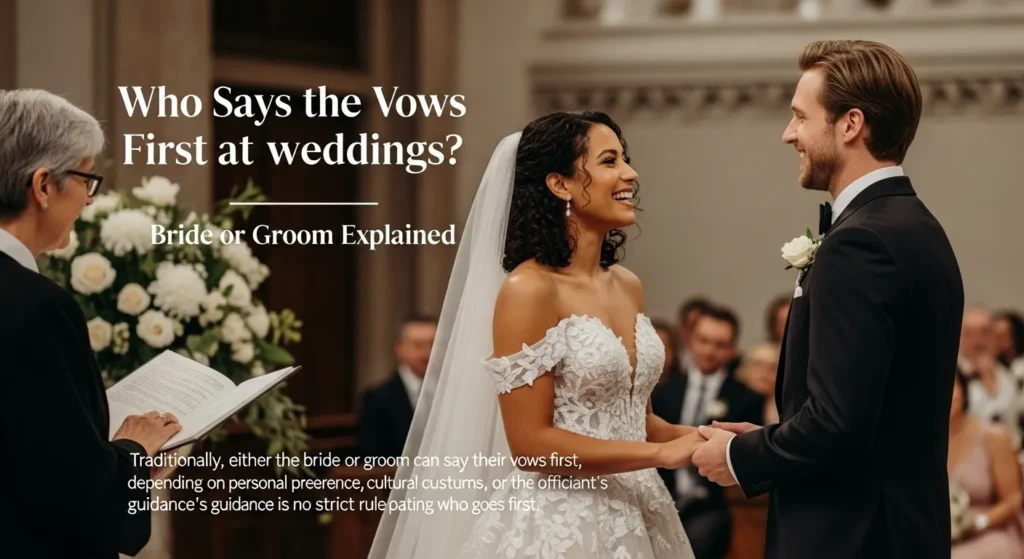
For couples deciding who should go first, here are simple steps:
- Talk it out before the ceremony.
- Consider comfort who feels calmer starting?
- Think about emotion sometimes it’s best for the more emotional partner to go second.
- Match the length balance vows so neither feels too short or too long.
- Remember: there’s no wrong answer.
Discounts and Planning Notes
Wedding planning is expensive, so many couples look for smart savings. Right now, there are promotions like 25% off wedding services (Code: WEDDING2025), or $50 credit for stationery through Minted websites. Members even get 20% off and free shipping daily.
Just note, some promotions like the 25% discount end soon (Monday 10/6). These deals can ease costs while still letting you personalize your vows beautifully.
Final Thoughts
At the end of the day, the question “Who normally says the vows first: bride or groom?” doesn’t have a single answer anymore. Tradition says the groom usually goes first, but modern couples write their own rules.
What matters is that the vows reflect love, respect, and a shared future. Whether you speak for 30 seconds or 3 minutes, whether you flip a coin or follow ancient tradition, the power of vows lies not in their order—but in their promise.
FAQs
1. Who usually says the vows first?
Traditionally, the groom says vows first. Today, couples often choose freely who begins.
2. Are vows legally required?
No, only the declaration of intent is legally required. Personal vows are optional.
3. How long should vows last?
Most vows last 30 seconds to 3 minutes. Keep personal vows under 2–3 minutes.
4. Do same-sex couples follow vow order?
Same-sex couples create their own traditions, often choosing order based on comfort.
References
- Cranmer, T. The Book of Common Prayer (1549 & 1594 editions).
- Newcastle Celebrant Kez – Officiant experience (over 700 weddings in Australia).
- Minted Weddings. Guide to Traditional and Personal Vows. Updated May 16, 2025.
- Hindu Wedding Rituals – Saptapadi (Seven Steps), cultural tradition.
- Catholic Church. Sacrament of Matrimony Guidelines.
- Jewish Virtual Library – Jewish Wedding Traditions and Ring Exchange.
- Islamic Nikah Practices – Marriage Contract and Mahr.
- Buddhist Wedding Customs – Silent Vows and Guided Readings.
- Celtic Heritage Trust – Handfasting and Wedding Rituals.
- Real Couple Anecdotes – Publicly shared stories on vow length and order.
Disclaimer: This article provides general wedding information for educational purposes only. Traditions vary by culture, religion, and location. Always confirm details with your officiant or legal authority.
Author: Richard Stephens
Richard Stephens is a wedding culture researcher and writer with years of experience studying traditions across religions and cultures. He offers practical, human-centered insights to help couples create meaningful, modern wedding ceremonies.



